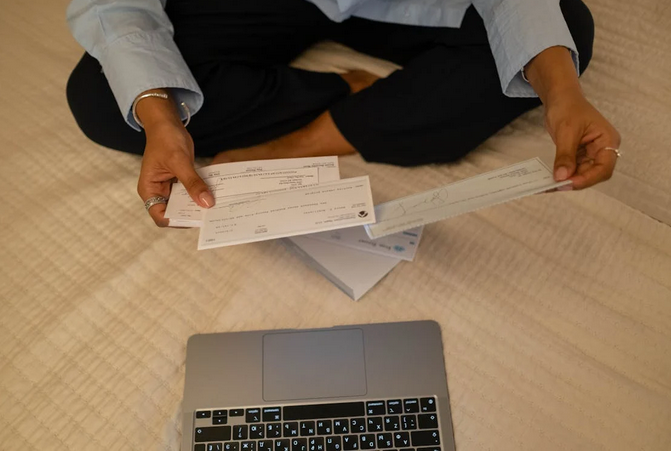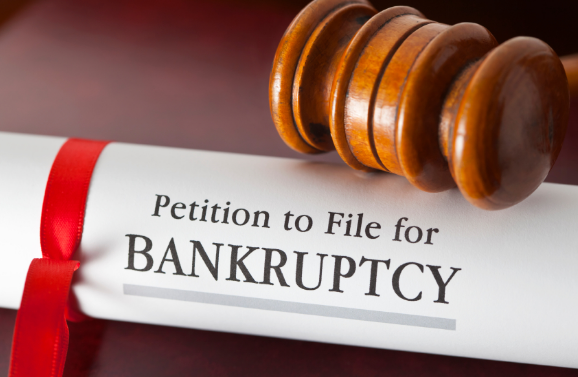Welcome to the first step in transforming your financial future! In a world where expenses can spiral out of control and bad debt lurks like an insidious shadow, understanding how to master your finances has never been more crucial. Whether you’re a seasoned money manager or just starting to navigate the complexities of budgeting, this guide will equip you with actionable tips and strategies to minimize that dreaded lousy debt expense.
Set Clear Credit Policies

First, what is bad debt expense? Second, how can we manage to minimize it? One of the most effective ways to minimize bad debt is by creating clear and well-defined credit policies from the get-go. A credit policy sets the ground rules for offering credit to customers. It can include guidelines on payment terms, credit limits, and the criteria you’ll use to decide who gets credit. Be transparent with your customers about these policies. A detailed credit application and a contract outlining the terms will ensure everyone is on the same page. This kind of upfront communication builds trust with your customers while giving you a legal safety net.
Do Credit Checks on New Customers
Offering credit without checking a customer’s financial history is like taking a gamble—and it’s often not worth the risk. Performing credit checks on new customers is a simple way to screen for potential bad debt. These checks give you insight into the customer’s creditworthiness and payment habits, helping you determine whether they fit for credit. If a customer has a history of late payments or financial instability, you can limit the credit you offer or require upfront fees.
Implement a Strong Collection Process
Even with the best credit policies, some customers will still miss payments. That’s why having a solid collections process in place is crucial. You’ll want to act fast when a payment is overdue, starting with friendly reminders and moving to more assertive approaches as needed. Many businesses opt to send automated reminders to customers before and after an invoice’s due date. Not only does this keep the payment at the top of the customer’s mind, but it also shows that you’re serious about collections. If these initial steps fail, don’t hesitate to escalate the process by sending final notices or involving a collections agency.

Offer Early Payment Discounts
A great way to incentivize customers to pay their bills on time—or early—is by offering early payment discounts. This strategy benefits both parties: customers save a little money, and you improve your cash flow while reducing the chances of bad debt. For instance, offering a 2% discount if an invoice is paid within 10 days is a small price to ensure faster payments. Offering early payment discounts doesn’t just reduce bad debt, but it also helps you strengthen relationships with customers by giving them a financial incentive to pay sooner.
Diversify Your Customer Base
Relying on just a handful of customers can increase your financial risk if one or more of them fails to pay their bills. Diversifying your customer base ensures that your business isn’t overly dependent on any single client, which can help mitigate the impact of bad debt. It’s simple: the more customers you have, the less devastating any wrong debt account will be. So, if you notice that a few clients are responsible for the bulk of your revenue, it may be time to broaden your base.
Write Off Bad Debt Quickly

It may seem counterintuitive, but once you’ve determined that a debt is uncollectible, it’s best to write it off as soon as possible. Prolonging the process of chasing after money that’s unlikely to be recovered just wastes time and resources. Writing off bad debt promptly helps you clear it from your books, giving you a more accurate picture of your financial health. Plus, it lets your team focus on collecting from customers more likely to pay.
Bad debt is an inevitable part of doing business, but it doesn’t have to cripple your financial strategy. By setting clear credit policies, conducting credit checks, implementing a solid collection process, and offering early payment incentives, you can significantly minimize your exposure to bad debt. Remember, staying proactive and diligent in managing your accounts receivable is critical to reducing bad debt and maintaining healthy cash flow.








 The Offer in Compromise program is a popular option for those seeking to settle their tax liabilities for less than the total amount owed. However, the terms of the OIC can vary, and it’s crucial to examine them closely. Evaluate the IRS’s assessment of your ability to pay, considering factors such as income, expenses, and asset equity. Understanding the terms and ensuring they align with your financial capabilities is essential to avoid future challenges and maintain compliance with the agreed-upon settlement.
The Offer in Compromise program is a popular option for those seeking to settle their tax liabilities for less than the total amount owed. However, the terms of the OIC can vary, and it’s crucial to examine them closely. Evaluate the IRS’s assessment of your ability to pay, considering factors such as income, expenses, and asset equity. Understanding the terms and ensuring they align with your financial capabilities is essential to avoid future challenges and maintain compliance with the agreed-upon settlement.


 Developing a strategy is crucial for any trader looking to succeed in the financial markets. A well-thought-out strategy can help you stay focused, reduce emotional trading decisions, and improve your overall profitability. The first step in developing a solid trading strategy is to identify what type of trader you want to be. Are you more of a day trader, or do you prefer swing trading? Do you like high-risk trades, or are conservative investments more your thing? Understanding your preferred trading style will help guide your strategy’s development.
Developing a strategy is crucial for any trader looking to succeed in the financial markets. A well-thought-out strategy can help you stay focused, reduce emotional trading decisions, and improve your overall profitability. The first step in developing a solid trading strategy is to identify what type of trader you want to be. Are you more of a day trader, or do you prefer swing trading? Do you like high-risk trades, or are conservative investments more your thing? Understanding your preferred trading style will help guide your strategy’s development.
 Credit card companies want to ensure that they maximize their profits, and one way of doing this is by targeting current customers with offers for new services and products they may not need or even realize they are signing up for. That’s what’s called “upselling,” and it works like a charm for many companies. This is especially true for banks and credit card issuers, so be wary of the offers they give you.
Credit card companies want to ensure that they maximize their profits, and one way of doing this is by targeting current customers with offers for new services and products they may not need or even realize they are signing up for. That’s what’s called “upselling,” and it works like a charm for many companies. This is especially true for banks and credit card issuers, so be wary of the offers they give you. Low-income customers are vulnerable to the credit card industry’s predatory practices because they do not have access to other forms of financial services. Credit card issuers offer them high-interest rates, hidden fees, and terms that are difficult to understand.
Low-income customers are vulnerable to the credit card industry’s predatory practices because they do not have access to other forms of financial services. Credit card issuers offer them high-interest rates, hidden fees, and terms that are difficult to understand.

 Investing in the stock market involves some degree of risk. Be sure to understand your risk tolerances and levels of comfort before investing. If you’re more risk-averse, consider investing in low-risk stocks or diversifying your investments into different sectors. For instance, consider investing in tech or small cap stocks if you’re comfortable with higher risks. In conclusion, investing in the stock market can be a great way to grow your money.
Investing in the stock market involves some degree of risk. Be sure to understand your risk tolerances and levels of comfort before investing. If you’re more risk-averse, consider investing in low-risk stocks or diversifying your investments into different sectors. For instance, consider investing in tech or small cap stocks if you’re comfortable with higher risks. In conclusion, investing in the stock market can be a great way to grow your money. When looking for a credit repair company, it is important to do your research. Make sure to read reviews and compare rates. You should also ask friends and family if they have any experience with
When looking for a credit repair company, it is important to do your research. Make sure to read reviews and compare rates. You should also ask friends and family if they have any experience with 
 Auditors are responsible for ensuring that a company’s financial records are orderly and efficient. They are responsible for ensuring the accuracy of financial records and accounts. They are accountable for controlling financial expenses, inventory, and, in some cases, payroll. Auditors play an essential role in maintaining financial records. This helps them prepare and review financial statements. They perform reviews of financial records and prepare the fiscal reports issued at the end of the fiscal year. They also have to achieve financial evaluations on an ongoing basis.
Auditors are responsible for ensuring that a company’s financial records are orderly and efficient. They are responsible for ensuring the accuracy of financial records and accounts. They are accountable for controlling financial expenses, inventory, and, in some cases, payroll. Auditors play an essential role in maintaining financial records. This helps them prepare and review financial statements. They perform reviews of financial records and prepare the fiscal reports issued at the end of the fiscal year. They also have to achieve financial evaluations on an ongoing basis. An accountant is more than just an accountant. They can also give you objective advice on how to develop your business. They can help you set up your company and prepare your tax returns. An accountant can monitor your financial progress and prepare financial reports. They can also make adjustments if necessary. They can also handle payroll, especially if your business needs to hire more employees. Accountants can monitor financial progress and prepare financial reports. They can also make adjustments if necessary. They can also handle payroll, especially if your company needs to hire more employees.
An accountant is more than just an accountant. They can also give you objective advice on how to develop your business. They can help you set up your company and prepare your tax returns. An accountant can monitor your financial progress and prepare financial reports. They can also make adjustments if necessary. They can also handle payroll, especially if your business needs to hire more employees. Accountants can monitor financial progress and prepare financial reports. They can also make adjustments if necessary. They can also handle payroll, especially if your company needs to hire more employees.
 The best accounting firms are those that many people will recommend. Whenever you try to find a good accounting and consulting firm to hire, you must look for one with a good reputation. If a particular firm is well known for how effective and efficient they are, it means that the customers are satisfied. You should, therefore, check with that firm and see how well it will work for you. Any investment should be made cautiously. Make sure you trust the firm that you choose to hire. It should be a reputable firm, which will help you get the best out of accounting and consulting services.
The best accounting firms are those that many people will recommend. Whenever you try to find a good accounting and consulting firm to hire, you must look for one with a good reputation. If a particular firm is well known for how effective and efficient they are, it means that the customers are satisfied. You should, therefore, check with that firm and see how well it will work for you. Any investment should be made cautiously. Make sure you trust the firm that you choose to hire. It should be a reputable firm, which will help you get the best out of accounting and consulting services. You should consider what kind of services you need. Some firms charge according to the services that you need. There are monthly accounting services, bookkeeping services, consultation, etc. According to the needs of your business, you should choose what works best. The firm can mostly provide different options and packages with different packages that can help you narrow down to your business’s needs. You should look across various firms and compare their services and pick the one that suits your needs best.
You should consider what kind of services you need. Some firms charge according to the services that you need. There are monthly accounting services, bookkeeping services, consultation, etc. According to the needs of your business, you should choose what works best. The firm can mostly provide different options and packages with different packages that can help you narrow down to your business’s needs. You should look across various firms and compare their services and pick the one that suits your needs best.
 Variety of Deals
Variety of Deals Trusted by Partners and Customers
Trusted by Partners and Customers
 A borrower’s biggest worry is if the terms and schedules of repayment are convenient for them. No one wants to get a loan and then end up running into deeper financial issues soon. A professional and licensed lender provides negotiable and reasonable terms. That is why it is critical to deal with a professional lending institution that is ready and willing to support you when you encounter further issues.
A borrower’s biggest worry is if the terms and schedules of repayment are convenient for them. No one wants to get a loan and then end up running into deeper financial issues soon. A professional and licensed lender provides negotiable and reasonable terms. That is why it is critical to deal with a professional lending institution that is ready and willing to support you when you encounter further issues.
 as cash, that amount will be taxable to the employee. As an employee, you can use these credits to purchase benefits. Flexible loans can also be defined in a way in which the application creates a flex credit record that determines how they are calculated. The credits are calculated based on many variables, including salary, years of work, age and number of dependents. Every employee enrolled has an individual flex record.
as cash, that amount will be taxable to the employee. As an employee, you can use these credits to purchase benefits. Flexible loans can also be defined in a way in which the application creates a flex credit record that determines how they are calculated. The credits are calculated based on many variables, including salary, years of work, age and number of dependents. Every employee enrolled has an individual flex record. compensation approach. Generally, each employee has different needs depending on whether they are single or have a family, or even if they are seniors. All of whom have disparate health care issues that require divergent attention. With a flex credit plan, you are able to move from a design to a more customized approach that will make room for more choices. The lifecycle choice enables you to be able to manipulate the credit in a way that will cover all your needs.
compensation approach. Generally, each employee has different needs depending on whether they are single or have a family, or even if they are seniors. All of whom have disparate health care issues that require divergent attention. With a flex credit plan, you are able to move from a design to a more customized approach that will make room for more choices. The lifecycle choice enables you to be able to manipulate the credit in a way that will cover all your needs.
 You should understand that you have to repay more money if the interest rates are a bit higher. The customer service offered by these lenders is another thing you have to consider. Look for one that handles their clients in the best way possible. Comparing online loans before settling for any lender is something you should do. Here are the benefits of comparing online loans.
You should understand that you have to repay more money if the interest rates are a bit higher. The customer service offered by these lenders is another thing you have to consider. Look for one that handles their clients in the best way possible. Comparing online loans before settling for any lender is something you should do. Here are the benefits of comparing online loans. understand your loan limits. It is something that varies in different lenders. You may find you that your limit is higher in a specific company and lower in others. Comparing gives you the opportunity to know where you have a higher limit so that you may borrow a lot of money.
understand your loan limits. It is something that varies in different lenders. You may find you that your limit is higher in a specific company and lower in others. Comparing gives you the opportunity to know where you have a higher limit so that you may borrow a lot of money.
 want to hire. They should present to you the right papers to prove they are indeed qualified for this job. This can be academic papers that show they have studied a related course. Proper certification from the relevant accounting or tax bodies to prove they are qualified to practice this job is also necessary.
want to hire. They should present to you the right papers to prove they are indeed qualified for this job. This can be academic papers that show they have studied a related course. Proper certification from the relevant accounting or tax bodies to prove they are qualified to practice this job is also necessary.
 A personal loan can be used for many purposes. You can decide to buy yourself a pair of shoes, start a business or clear your school fees. This is one of the reasons why people take personal loans. No one dictates what you should do with the money.
A personal loan can be used for many purposes. You can decide to buy yourself a pair of shoes, start a business or clear your school fees. This is one of the reasons why people take personal loans. No one dictates what you should do with the money. Do not be convinced by lenders who charge low interest rates on their loans. Some might have hidden charges which means that you will pay more in the future. Note that, it is better to use a lender with high interest rates but without the hidden charges.
Do not be convinced by lenders who charge low interest rates on their loans. Some might have hidden charges which means that you will pay more in the future. Note that, it is better to use a lender with high interest rates but without the hidden charges.
 After you have identified the lawyers, you think you can work with, set a meeting with each of them. Take that time to study their personality and professionalism. In addition to that, explain your situation without hiding anything. Honesty is critical for any court case. A good lawyer should listen and ask questions to understand the situation better. The way they treat you during this meeting period determines how you will be addressed in the future. Ensure that you get the best treatment ever.
After you have identified the lawyers, you think you can work with, set a meeting with each of them. Take that time to study their personality and professionalism. In addition to that, explain your situation without hiding anything. Honesty is critical for any court case. A good lawyer should listen and ask questions to understand the situation better. The way they treat you during this meeting period determines how you will be addressed in the future. Ensure that you get the best treatment ever. Everything good comes with a price. If you want good services, you must be willing to pay for the services. Understand that, sometimes it does not matter the amount you spend but the value you get from your money. There are some of the most expensive lawyers in the market, but we have affordable ones. I encourage people to cut their coat according to their cloth but watch out for quality and value.
Everything good comes with a price. If you want good services, you must be willing to pay for the services. Understand that, sometimes it does not matter the amount you spend but the value you get from your money. There are some of the most expensive lawyers in the market, but we have affordable ones. I encourage people to cut their coat according to their cloth but watch out for quality and value.